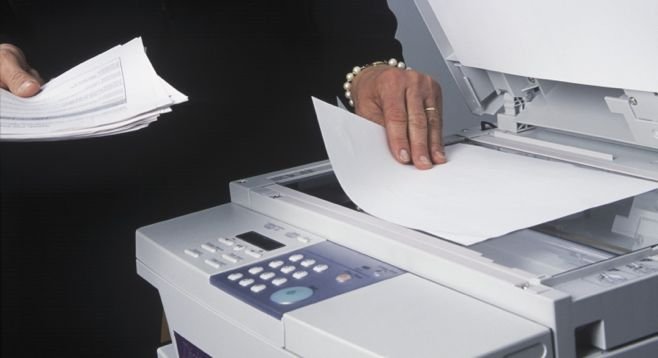 Facebook
Facebook
 X
X
 Instagram
Instagram
 TikTok
TikTok
 Youtube
Youtube

Heymatt:
How did we arrive at our crazy “standards” for paper sizes? I mean, where did sizes like eight-and-a-half by eleven inches come from? Who is responsible for this mess? And what would have happened to paper sizes if the U.S. had gone metric? What do they do in Europe?
— Alfred, via email
The exact answer to this one is lost in the foggy muck of tradition, but history gives us a few clues. Like a great many things, Americans borrowed industrial paper production techniques from the British (who were still colonizing America when paper mills first hit the scene in England), who had a paper-sizing system of equal complication as their old currency system. The various sizes of English paper (many of which included half- and quarter-inches) bore names like foolscap, hand, pot, and double elephant. Many of the names came from medieval watermarking techniques. Foolscap-sized paper, for instance, was marked with the image of a court jester in days of old when reading wasn’t a skill of every Tom, Dick, and Nigel. None of the old-time sizes of paper I know correspond to contemporary, American stationery paper, but a lot of them are roughly double the size. This makes some sense because, in merry olde England and colonial America, paper for writing letters would be purchased from a “stationer,” who would trim those ungainly, industrial-sized sheets into attractive leaflets for writing flowery poesy to one’s beloved. My inference is that the conventions from British paper sizing crossed the water along with the technology to make it and that the sizes we use today are evolved from those. They’re actually not strictly American, either, since the standards are used in the U.S., Canada, and Mexico, but it’s only here in the U.S. that they’re the only sizes.
As for metric paper, it’s very much in use and governed by the International Standards Organization. One standard sheet of “A0” paper has an area of 1 square meter. Cutting the paper in half the short way produces the next size down. Repeat as necessary. European “A4” is roughly the same size as “American letter.”


Heymatt:
How did we arrive at our crazy “standards” for paper sizes? I mean, where did sizes like eight-and-a-half by eleven inches come from? Who is responsible for this mess? And what would have happened to paper sizes if the U.S. had gone metric? What do they do in Europe?
— Alfred, via email
The exact answer to this one is lost in the foggy muck of tradition, but history gives us a few clues. Like a great many things, Americans borrowed industrial paper production techniques from the British (who were still colonizing America when paper mills first hit the scene in England), who had a paper-sizing system of equal complication as their old currency system. The various sizes of English paper (many of which included half- and quarter-inches) bore names like foolscap, hand, pot, and double elephant. Many of the names came from medieval watermarking techniques. Foolscap-sized paper, for instance, was marked with the image of a court jester in days of old when reading wasn’t a skill of every Tom, Dick, and Nigel. None of the old-time sizes of paper I know correspond to contemporary, American stationery paper, but a lot of them are roughly double the size. This makes some sense because, in merry olde England and colonial America, paper for writing letters would be purchased from a “stationer,” who would trim those ungainly, industrial-sized sheets into attractive leaflets for writing flowery poesy to one’s beloved. My inference is that the conventions from British paper sizing crossed the water along with the technology to make it and that the sizes we use today are evolved from those. They’re actually not strictly American, either, since the standards are used in the U.S., Canada, and Mexico, but it’s only here in the U.S. that they’re the only sizes.
As for metric paper, it’s very much in use and governed by the International Standards Organization. One standard sheet of “A0” paper has an area of 1 square meter. Cutting the paper in half the short way produces the next size down. Repeat as necessary. European “A4” is roughly the same size as “American letter.”
Comments